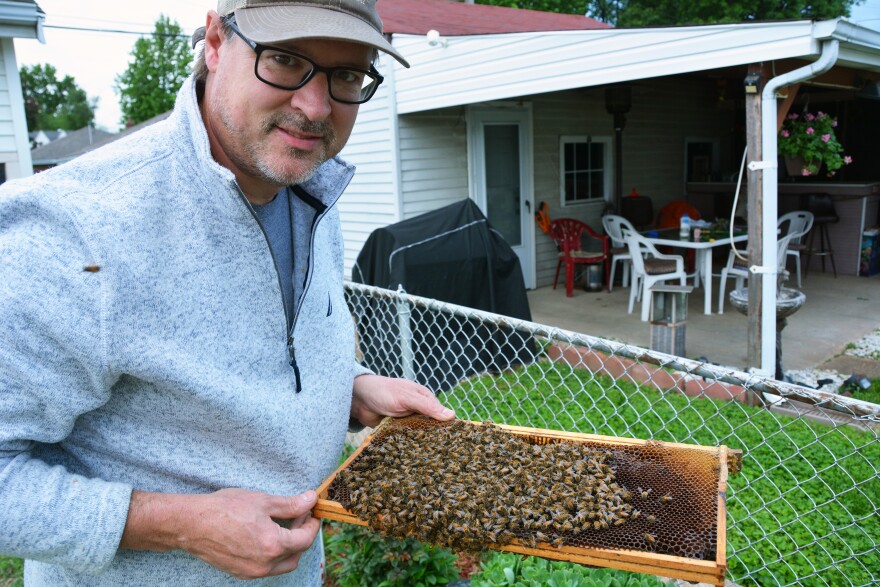Bob Altman didn’t notice the bee swarm at first.
“My neighbor came over and knocked on my door and said, ‘Bob, there’s something in your backyard,’” Altman said.
The Florissant resident watched as thousands of bees zoomed in circles behind his home “like a tornado,” before landing on an old clothesline pole in a humming ball.
Honeybees begin swarming every spring like clockwork, departing their hives en masse in search of new nesting sites. Some Missouri beekeepers are now visiting backyards and neighborhoods to collect the swarms, despite the pandemic. With the price of honeybee colonies increasing, competition to net the rogue bees is becoming more intense.
A typical colony contains tens of thousands of honeybees — and when it starts to grow too large, a schism occurs. Half the colony stays behind with a new queen, and the other half leaves with the old queen.
The swarm can form a football-shaped clump or even a “thick black curtain” hanging down from a branch, said local beekeeper Scott Allred.
Allred, who owns about 45 hives in Wildwood, has been collecting swarms in the St. Louis area since 2012.
“It’s intimidating the first time,” Allred said, remembering an early swarm collection he did with his 10-year-old son. “He was standing underneath holding the ladder, and we’re shaking the bees into the box. A whole bunch fell onto his head and started climbing up his legs.”

Because swarms have no hive or honey to defend, Allred added, they’re often very calm. He rarely wears gloves as he coaxes the queen and her colony into a box — or sometimes, a 5-gallon bucket.
“Once the queen is in the box, all of the other bees will follow her,” Allred said. “Then you can move them to wherever makes sense to put them.”
So far, Allred has collected three swarms from St. Louis neighborhoods this spring. He isn’t worried about contracting the coronavirus on these visits, because most people give him a wide berth when they see him in his white bee suit, carrying a smoker.
“As a beekeeper, social distancing is usually kind of natural,” he said.

Demand for swarm collection services in Missouri has been strong this year, likely fueled by a period of warm early spring weather followed by lower temperatures.
In recent weeks, dozens of hobbyists have posted photos of swarms they captured on the Missouri Beekeepers Facebook page. One Chesterfield beekeeper posted that he had captured seven swarms in the St. Louis County area in the first week of May, including one clinging to a soccer net.
In less than 10 years, the price for a starter colony of about 7,000 bees has more than doubled — from $90 to about $200.

“Swarms are essentially free bees if you discount the time and effort,” Allred said. “There’s a lot of competition to get those swarm calls now.”
In Florissant, Bob Altman didn’t need to find a professional to remove his backyard swarm. The bees disappeared on their own, less than 24 hours after they arrived.
“It was there in the morning when I got up and by 11, they were gone,” Altman said. “In my whole life, I’ve never seen anything like that before.”
Follow Shahla on Twitter: @shahlafarzan
Send questions and comments about this story to feedback@stlpublicradio.org




